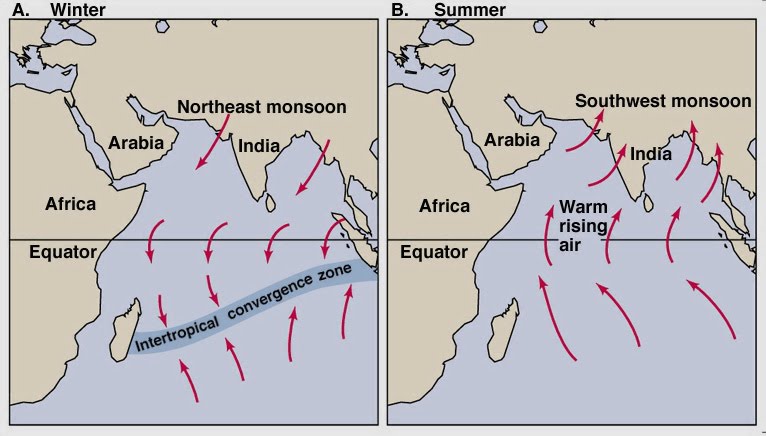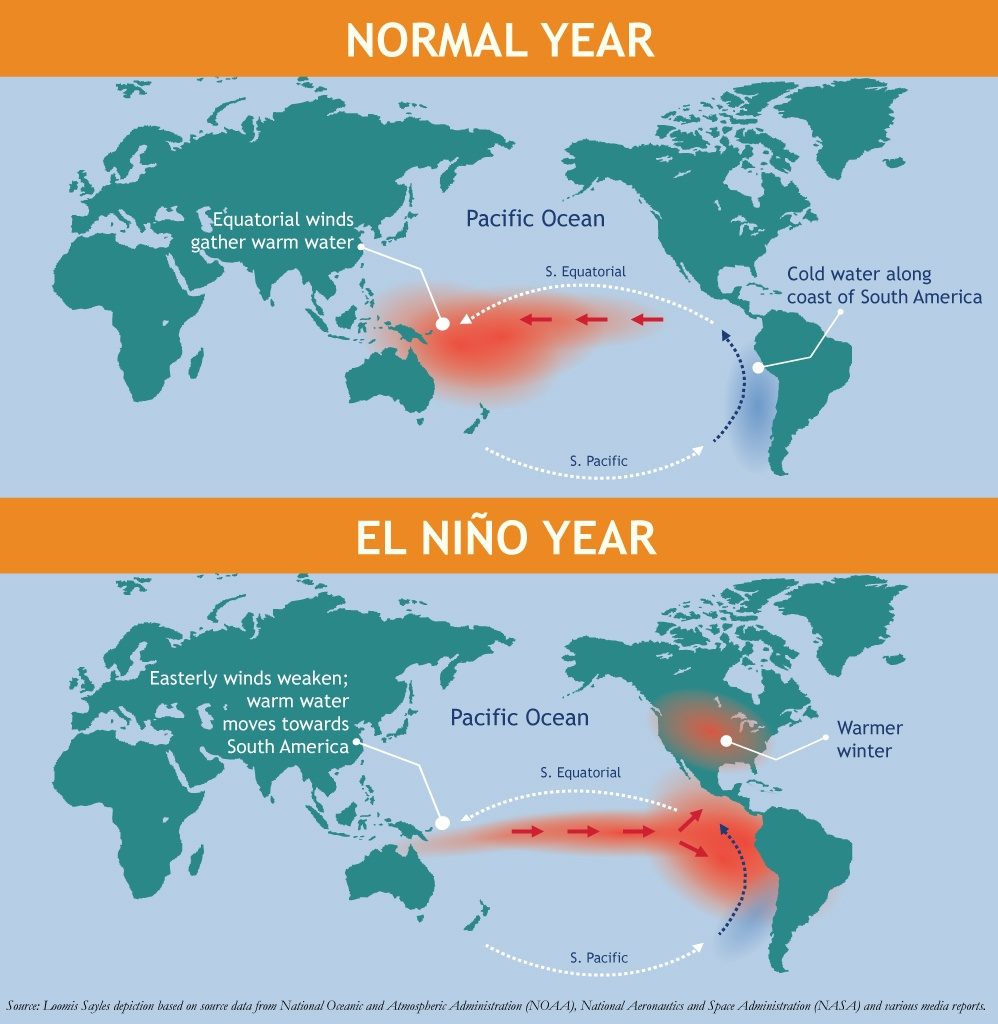Context: The southwest monsoon 2020 has officially drawn to an end with the India Meteorological Department (IMD) declaring a withdrawal of the associated winds and rainfall pattern from India on Wednesday.
Relevance:
GS Paper 1: Salient Features of World Physical Geography; Important Geophysical phenomena (earthquakes, tsunami, volcanoes, cyclones);
Mains questions:
- What characteristics can be assigned to monsoon climate that succeeds in feeding more than 50 percent of the won population residing in Monsoon Asia? 15 marks
- India needs better science to prepare more effective disaster management plans and improve resilience in a warming world. Discuss in the context of uncertainty in Monsoon rainfall in India. 15 marks
Dimensions of the topic:
- What is Monsoon?
- What is long period average (LPA)?
- Why is LPA important?
- Climate change and Monsoon.
- way forward
What is Monsoon?
Monsoon connotes the climate associated with seasonal reversal in the direction of winds. India has hot monsoonal climate which is the prevalent climate in south and southeast Asia.

What is long period average (LPA)?
LPA is the average rainfall received by the country as a whole during the south-west monsoon, for a 50-year period. The current LPA is 89 cm, based on the average rainfall over years 1951 and 2000. This acts as a benchmark against which the rainfall in any monsoon season is measured.
Similarly, the country is said to have received excess rainfall if the rainfall is greater than 110 per cent of LPA. It is deemed ‘normal’ when the actual rainfall received falls between 96 and 104 per cent of LPA.
Why is LPA important?
The LPA uses a 50-year average because annual rainfall can be highly variable. The Indian Meteorological Department gives information related to day to day and month to month variations in rainfall. The farmers can take pre decision while showing the crops. It also helps in better urban planning to address the issues related to urban flood. Moreover, A forecast from the IMD, therefore, is important for governments, businesses and the general public due to its importance for the Indian economy.
It is IMD’s forecast that prompts the Central and State governments to make their pre-monsoon preparation to deal with flooded drains, pot-holed roads or drought-afflicted farms.
Similarly, the Centre’s flood alerts and storm warnings are based on expected rainfall in relation to the LPA. Understanding the annual deviations from LPA helps shed light on the extent to which climate change and seasonal aberrations such as El Nino are impacting India’s rainfall patterns.
Climate change and Monsoon:
Indian monsoon depends multiple factors like El Nino, Jet stream, Tibetan Plateau, Inter tropical convergence zone, temperature of ocean etc. All these factors are directly related to climate change therefore climate change has negative impact on monsoon i.e. For the first time since 2010, India got more than 100% of its long period average (LPA) of 88 cm in consecutive years. Last year the country saw record rainfall of 110% of the LPA, the highest in a quarter century. India has never got over 105% of the LPA in consecutive years in at least 30 years, according to records available since 1988 on the IMD website.
From last two years, India received more rain, it also implies floods, overflowing dams, landslides and loss of lives. Moreover, surplus rains are not evenly distributed in time and space. Therefore, much like there are attempts to improve flood forecast warnings — especially the short-term ones — there ought to be commensurate efforts by authorities and infrastructure agencies to prepare for the environmental and ecological impact of excess rain.
Way forward:
There have been significant investments in super computing infrastructure to simulate weather as well as to tune forecasts to go beyond just giving rainfall estimates and factor in the potential damage of floods and cyclones. Building on these, scientists must also put in more effort and design research programmes that better analyse the vagaries of the northeast monsoon. Along with more understanding of how climate is changing locally, India needs better science to prepare more effective disaster management plans and improve resilience in a warming world.
Background:
1: El Nino and Indian Monsoon:
EI-Nino is a complex weather system that appears once every three to seven years, bringing drought, floods and other weather extremes to different parts of the world.
The system involves oceanic and atmospheric phenomena with the appearance of warm currents off the coast of Peru in the Eastern Pacific and affects weather in many places including India. EI-Nino is merely an extension of the warm equatorial current which gets replaced temporarily by cold Peruvian current or Humbolt current (locate these currents in your atlas). This current increases the temperature of water on the Peruvian coast by 10°C. This results in:
- The distortion of equatorial atmospheric circulation;
- Irregularities in the evaporation of sea water;
- Reduction in the amount of planktons which further reduces the number of fish in the sea.
The word EI-Nino means ‘Child Christ’ because this current appears around Christmas in December. December is a summer month in Peru (Southern Hemisphere). EI-Nino is used in India for forecasting long range monsoon rainfall. In 1990-91, there was a wild EI-Nino event and the onset of southwest monsoon was delayed over most parts of the country ranging from five to twelve days.

2: Inter Tropical Convergence Zone (ITCZ)
The Inter Tropical Convergence Zone (ITCZ) is a low pressure zone located at the equator where trade winds converge, and so, it is a zone where air tends to ascend. In July, the ITCZ is located around 20°N-25°N latitudes (over the Gangetic plain), sometimes called the monsoon trough. This monsoon trough encourages the development of thermal low over north and northwest India. Due to the shift of ITCZ, the trade winds of the southern hemisphere cross the equator between 40° and 60°E longitudes and start blowing from southwest to northeast due to the Coriolis force. It becomes southwest monsoon. In winter, the ITCZ moves southward, and so the reversal of winds from northeast to south and southwest, takes place. They are called northeast monsoons.




